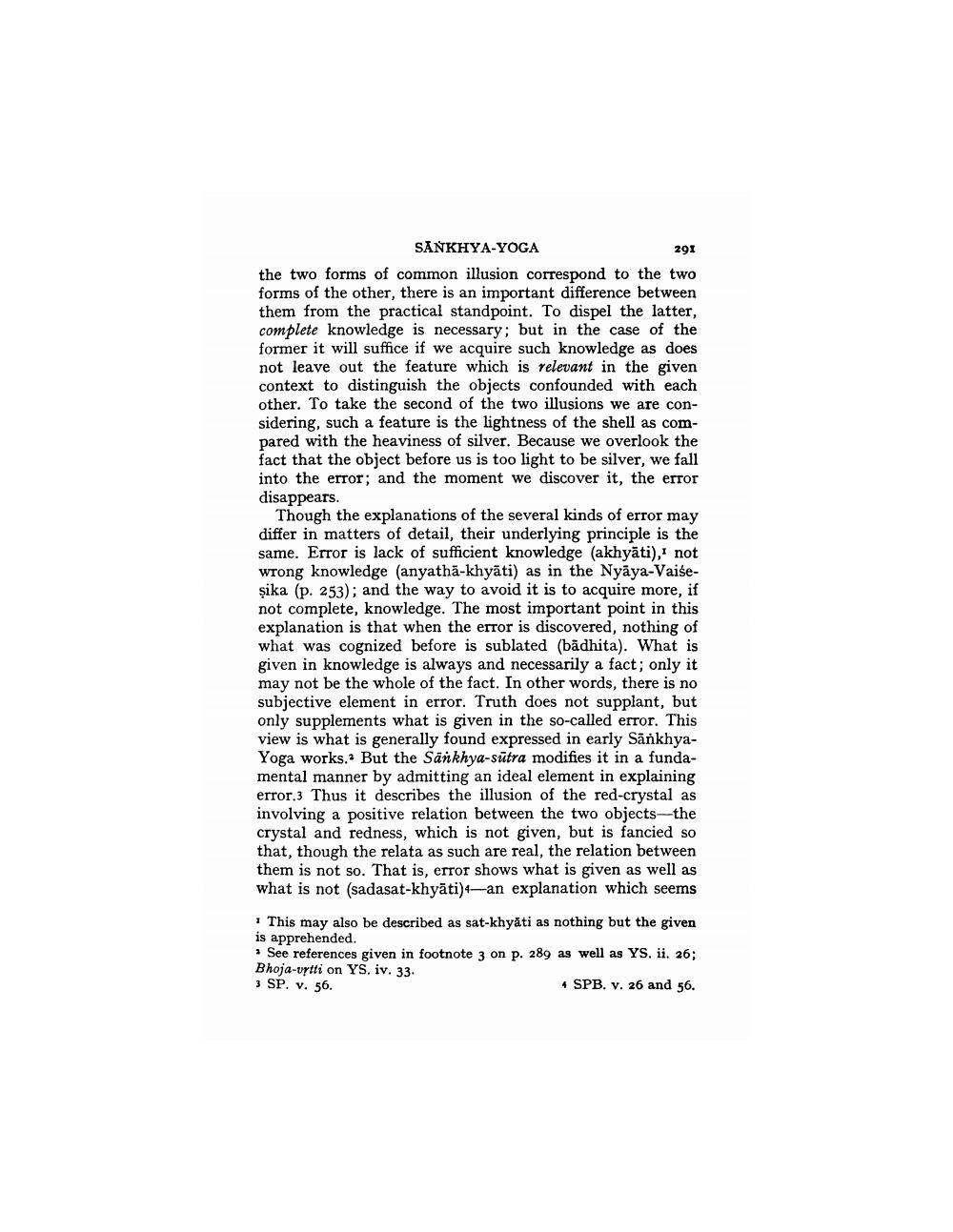________________
SANKHYA-YOGA
291
the two forms of common illusion correspond to the two forms of the other, there is an important difference between them from the practical standpoint. To dispel the latter, complete knowledge is necessary; but in the case of the former it will suffice if we acquire such knowledge as does not leave out the feature which is relevant in the given context to distinguish the objects confounded with each other. To take the second of the two illusions we are considering, such a feature is the lightness of the shell as compared with the heaviness of silver. Because we overlook the fact that the object before us is too light to be silver, we fall into the error; and the moment we discover it, the error disappears.
Though the explanations of the several kinds of error may differ in matters of detail, their underlying principle is the same. Error is lack of sufficient knowledge (akhyāti),1 not wrong knowledge (anyatha-khyāti) as in the Nyaya-Vaiseşika (p. 253); and the way to avoid it is to acquire more, if not complete, knowledge. The most important point in this explanation is that when the error is discovered, nothing of what was cognized before is sublated (badhita). What is given in knowledge is always and necessarily a fact; only it may not be the whole of the fact. In other words, there is no subjective element in error. Truth does not supplant, but only supplements what is given in the so-called error. This view is what is generally found expressed in early SankhyaYoga works. But the Sankhya-sutra modifies it in a fundamental manner by admitting an ideal element in explaining error.3 Thus it describes the illusion of the red-crystal as involving a positive relation between the two objects-the crystal and redness, which is not given, but is fancied so that, though the relata as such are real, the relation between them is not so. That is, error shows what is given as well as what is not (sadasat-khyāti)—an explanation which seems
This may also be described as sat-khyāti as nothing but the given is apprehended.
See references given in footnote 3 on p. 289 as well as YS. ii. 26; Bhoja-vytti on YS. iv. 33. 3 SP. v. 56.
4 SPB. v. 26 and 56.




